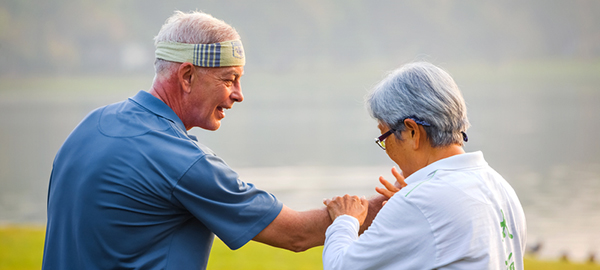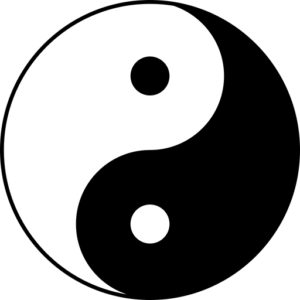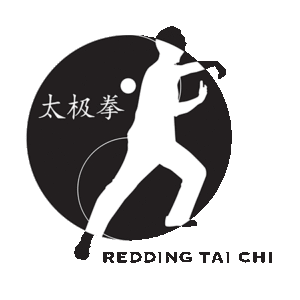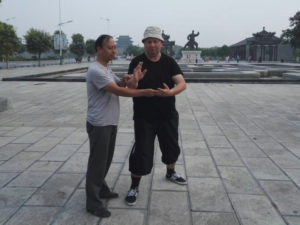Slanted FlyingJournal of Tai Chi Chuan
Health
Can Tai Chi Help People With Osteoarthritis?

Osteoarthritis (OA) is a degenerative disease that affects the joints, resulting in swelling, pain, and stiffness in the knees, hips, hands, and spine. It is the most common type of arthritis affecting 16%-33% of older adults.
Since OA is a progressive disease with no known cure, treatments only aim to relieve the symptoms and improve the mobility and quality of life of patients. Aside from taking pain relief and anti-inflammatory medications, it has been shown that doing Tai Chi can significantly improve the condition of patients with OA.
Tai Chi is a form of Chinese martial art which, aside from providing self-defense training, is also known for its numerous health benefits including busting stress, improving balance, strength, and endurance, and also preventing fall-related injuries.
It combines deep diaphragmatic breathing with a series of slow, flowing, rhythmic, and graceful movements for the purpose of finding that inner peace.
A Brief Background on Osteoarthritis
Because of injury, old age or obesity, your cartilage (a slippery tissue which cushions and covers the ends of bones in your joint) wears down over time. It functions as a shock absorber and ensures frictionless motion in the joints.
The deterioration of joint cartilage makes your bones rub together. This will result in various signs and symptoms that only worsen over time. Pain, tenderness, stiffness, limited range of motion, bone spurs, and a grating sensation are just some of the most common manifestations of OA.
How Tai Chi Can Help With Osteoarthritis
Tai Chi is often recommended as part of a treatment program and this is mostly used during the early stages of osteoarthritis. Researchers have also found out that this method can provide more symptomatic relief and improvement as compared to physical therapy.
If you’re suffering from knee OA and you practice Tai Chi for one hour at least twice a week, you may experience pain relief that allows you to function better and attend to your daily activities with less discomfort.
Aside from these physical benefits, Tai Chi can also boost your self-esteem, improve your mood, and reduce the risk of suffering from depression. Attending 12 weeks of Tai Chi classes can have lasting benefits for up to a year.
One of the main purposes of Tai Chi is to build enough strength in certain muscle groups for patients with knee OA. This is necessary in order to have adequate knee support, leading to lesser knee stress. This can be accomplished by doing low-impact and focused movements.
What Else Can Tai Chi Do?
There are several aspects incorporated into every Tai Chi movement including strength training, meditation, support, breathing, and mindfulness. On top of promoting a sense of well-being, it also helps OA patients through the following means:
- As a non-pharmacologic and non-invasive OA intervention
- Improves muscle strength, support, and flexibility
- Better coordination
- Relaxes tense muscles and joints
- Increases range of motion
- Reduces pain
- Relieves joint stiffness
- Improves joint stability and overall function
- Induces calmness and serenity
- Provides balance training
- Improves heart and lung functions
- Has very little side effects
- Helps with relaxation through visualization and mindfulness
- Sharpens your focus
- Lowers stress and anxiety
- Improves sleep
An important benefit of attending Tai Chi classes is also gaining social support which can boost your self-confidence. Besides, the presence of an instructor can ensure that you will not end up injuring yourself while executing the movements.
Additional Safety Tips
Listen to your body. Do not push yourself too hard especially if you’re only starting out. You must understand that there are movements you cannot yet do as a beginner. You need to rest if you suddenly feel uncomfortable, exhausted or in pain.
- Choose a knowledgeable and experienced instructor. It’s much better if he/she has worked with osteoarthritis patients before.
- Wear a knee brace for osteoarthritis while doing Tai Chi for additional knee stabilization and support. Knee braces are generally suitable for all levels of activity and body movements included in Tai Chi.
- Warm-up and cool-down to prepare your joints and prevent any injury.
- Listen to your body. Do not push yourself too hard especially if you’re only starting out. You must understand that there are movements you cannot yet do as a beginner. You need to rest if you suddenly feel uncomfortable, exhausted or in pain.
- Don’t take your classes on an empty or full stomach
Tai Chi has some similarity with yoga in terms of the fluidity of movements and the health benefits. Remember that the goal of every treatment for osteoarthritis is to alleviate the symptoms and improve joint function. Tai Chi has been proven to be effective in both. Though more and more people are turning to Tai Chi instead of physical therapy, always make it a practice to consult with your doctor before starting any activity.













